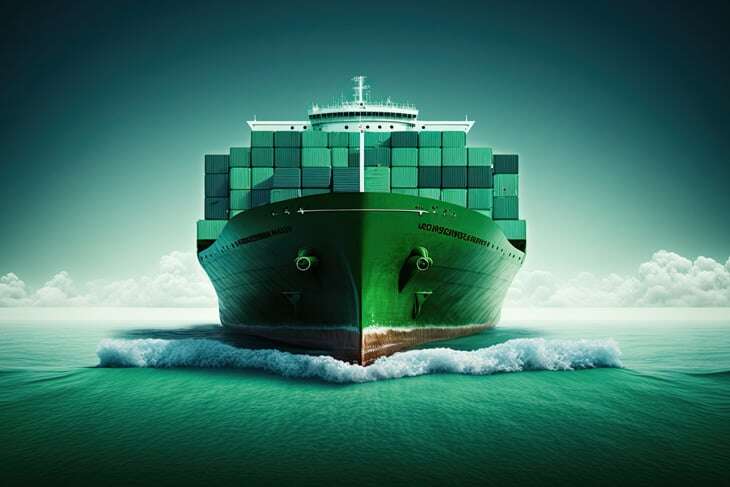4 min read
US Port Strike Threat: Impact on the Chemical Supply Chain
ResourceWise
:
Jan 8, 2025 12:00:00 AM

In a globalized business world that relies on an effective global shipping industry, trickle-down impacts from maritime upheaval are keenly felt. The chaos caused by Houthi rebels in the Red Sea, how the Russo-Ukraine war drove up cargo insurance costs, and how unsettled logistics follow El Niño droughts are just a few examples.
Now the International Longshoremen’s Association (ILA) is threatening mid-January strike action over unresolved concerns about automation in their industry for the first time in nearly half a century.
Since the union represents 47,000 cargo handlers across Eastern US and Gulf Coast ports, strike action could potentially disrupt global supply chains. If this action goes ahead, it would have significant implications for industry sectors that rely on efficient logistics, including the chemical sector.
Key Issues Driving the Strike
The ILA has been negotiating with the United States Maritime Alliance (USMX), a group of shipping lines and terminal operators, to resolve the issues that precipitate action. While earlier negotiations won pay concessions, the sticking point remains stronger protections against automation.
The union is demanding stricter limits on using semi-autonomous equipment, citing job security concerns. Only the US president can end a strike and order the dockers' union members back to work. This power is given in the Taft-Hartley Act, a federal law limiting the power and activities of labor unions, which was enacted in 1947.
However, President-elect Donald Trump's December indication that he does not support an automated port future has undoubtedly fortified the ILA's resolve. Posting on his Truth Social platform following a meeting with ILA chief negotiator Harold Daggett, Trump said: "I’ve studied automation and know just about everything there is to know about it. The amount of money saved is nowhere near the distress, hurt, and harm it causes for American Workers, in this case, our longshoremen."
In late 2023, we reported that a caustic soda market participant had seen increases in the Cost and Freight (CFR) component of logistics contracts. CFR trade deals place responsibility for delivering goods to a ship, loading them onto the ship, and paying the cost of freight to the port destination in the seller's hands. In this model, increases in CFR translate to rising selling prices as producers seek to claw back the extra cost from the buyer.
The then-current economic downturn might have underpinned lower volumes of raw materials and products being shipped. Theoretically, deep-sea freight rates decrease under those market conditions because freight companies have to compete for customers.
However, according to brokers, a downturn in demand did not result in those expected fundamentals. Chemical companies negotiating with logistics providers consistently found prices rising, not dropping.
Are Just-in-time Strategies Just Out of Luck?
Many chemical producers rely on just-in-time logistics to maintain the flow of raw materials and finished goods. A strike could exacerbate delivery delays and increase logistical costs.
Shipping delays and rising freight rates would raise transportation costs, potentially passing expenses onto end users. For example, some carriers have already announced surcharges for transporting containers.
For example, Geneva, Switzerland-based Mediterranean Shipping will add an emergency operational surcharge of US$2,500 on northern Europe to US journeys from January 18, as per a late December 2024 announcement.
Experience tells us extended disruptions can potentially exacerbate container shortages, further stressing supply chains. These issues mirror past challenges, such as when the Ever Given container blocked the Suez Canal for six days in 2021 and the more recent rerouting of Red Sea shipping routes via the Cape of Good Hope. Further disruption to trade flow is inevitable if this strike goes ahead.
JP Morgan estimated a cost to the industry of up to US$5 billion per day, which could impact US economic growth trajectories significantly. Prolonged disruptions would undoubtedly lead to severe economic loss. A tightened supply of products will push prices higher, and where this ruptures economic growth, there is potential for production to be stopped altogether.
Mitigating Economic and Supply Chain Impacts
For the chemical industry, the situation underscores the importance of contingency planning. Companies may look to increase their inventories.
Stockpiling critical materials can be an effective strategy in the face of potential supply chain disruption, especially in times of uncertainty.
"Maintaining a reserve of key resources, businesses can avoid delays caused by shortages or geopolitical issues, ensuring smoother operations and keeping plants online when feedstocks supply is short," says Matteo Baldi, Global Sales Manager at ResourceWise Chemicals.
"There is also the option to explore alternative supplies, shipping routes, and logistical solutions to optimize value chains. There are several hundred established producers of caustic soda, for example, worldwide. Diversifying procurement is best done using robust databases."
In the infographic below, around 50 of the world's biggest caustic soda producers are visibly referenced. Each section around the outer layer of the infographic, which is featured in the Capacity dashboard of our chemicals-focused business intelligence platform OrbiChem360, represents a site producing the chemical intermediate.
When OrbiChem360 subscribers scroll over each of the Starburst infographic's elements, see pop-ups show each company's full name and nameplate capacity. These details are also available.

"Building up databases of potential producers allows companies to diversify within a network of suppliers. Having this level of flexibility helps to circumvent bottlenecks, delays, or blockages in traditional routes, improving overall supply chain resilience and maintaining a steady flow of goods," Baldi adds.
Balanced Approach to Automation
The threat hanging over logistics and shipping as dockworkers attempt to preserve their position in the shipping industry and the matter becomes geopolitical shows just how precarious today's landscape is.
We only have to look at what happened in the automotive sector late in 2023—which we explored in our blog post Is the Automotive Sector Strike Impacting Supply Chains—to see how powerful workforces and unions can be. GM for example, conceded the strike cost the company $200 million in its first two weeks.
It underpins the importance of taking a balanced approach to automation policies in the modern economy. While automation can significantly enhance efficiency and productivity, it is important to strike a balance that preserves jobs.
Thoughtfully integrating technology can help optimize supply chain operations without displacing workers, ensuring both technological advancement and the well-being of the workforce.
Resolving this dispute could set precedents that influence port operations and global supply chains for years to come.
At the same time, shipping challenges can open up opportunities for local producers to step in when disruption to deep sea freight routes occurs. This was seen during and after the COVID pandemic and led buyers in Europe, for example, to look at increasing their locally sourced material in favor of relying too heavily on imports, at least in the short term.
Stay up to date by subscribing to our newsletter.





